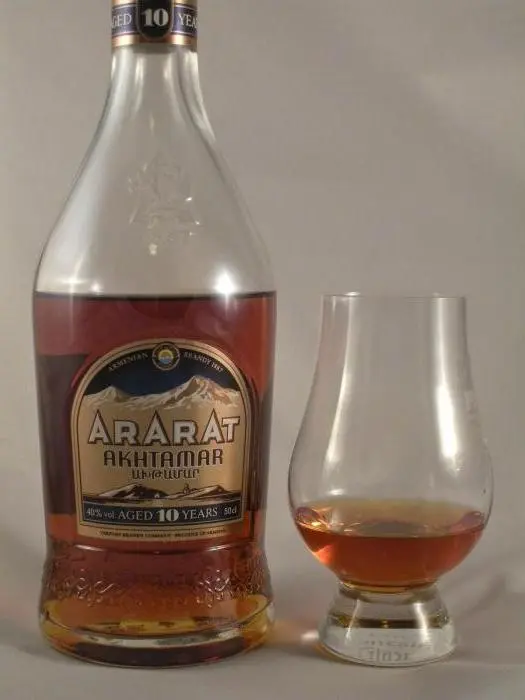The cognac is named after a small island in the Turkish lake Van, on which the residence of the Armenian royal dynasty of Artsrunids was located in the XNUMXth century. There is a beautiful legend about this island in Armenian folklore.
The Artsrunids had a beautiful princess, with whom an ardent young commoner fell in love. Every night he sailed to the shore and admired the slender figure and the lovely sad face of the princess, who walked along the embankment. She drew attention to a handsome young man, and noticing that he was on a boat, she began to take a torch with her – to serve as a kind of beacon for sailing in the dark. So Princess Tamar showed the way through the darkness of the night. But one day, during her walk, a storm broke out, and the downpour extinguished the torch. The young man lost his landmark and did not notice the high wave that covered his boat. The fragile ship sank, and behind it the young man, from whose mouth the last words sounded: “Ah, Tamar …”. This is how the island got its name, and then the Armenian drink.
Company History
The modern Yerevan Brandy Factory was created on the site of the brandy factory of the legendary man Nerses Tairyan, who established brandy production in Armenia in 1887. This enterprise was so successful that Nikolai Shustov, the largest alcohol producer in the Russian Empire, decided to buy the plant from Tairyan. After a long auction, Shustov took over the factory, and in 1899 cognacs began to be bottled under the Shustov and Sons brand.
The Shustovs appointed Mkrtich Musinyants, a local winemaker who had received an education in France and had an internship at the Cognac enterprises, as the manager. It was he who in 1902 created a blend of the first Armenian vintage cognac “Champagne Choice”, which received a gold medal in France for quality and the right to be called not brandy, but cognac.
But then the events of 1917 broke out, revolutionary unrest, nationalization. In 1920, on the basis of the plant, the Ararat trust was created, the products of which were mainly wines, cognacs accounted for only a small part. And so it was before World War II. Then production was completely suspended. And in 1953, the current building of the Yerevan Brandy Factory was built, and the production of brandy was separated from wine production. Then the company was renamed.
There are many glorious pages and even legends in the history of the enterprise, which are retold by guides for tourists who decide to visit one of the oldest factories in Armenia.
One of them is the legend of Churchill’s love for the Armenian Dvin cognac, the blend of which was created by Margar Sedrakyan, the chief technologist of the plant. During the Stalinist repressions, Sedrakyan was sent into exile, and after Churchill’s complaint about the deterioration in the taste of the drink, he was returned and again appointed chief technologist.
Another legend of the Stalin era is associated with a delegation from China that arrived at the plant to get acquainted with the production. The Minister of Foreign Trade of the USSR of those times, Anastas Mikoyan, ordered that each guest be given 6 bottles of cognac. The director of the enterprise, Avetik Muradyan, complied with the order, but issued an invoice to the government to cover the losses of such a generous gift. Angered by the actions of a subordinate, Mikoyan complained about him to Stalin. It seemed that Muradyan’s life was hanging in the balance, but Stalin ordered not to touch the director, and even vice versa – to encourage him for his careful attitude to products and thriftiness.
Today, the company produces 6 million bottles of brandy per year, has a turnover of 35 million dollars and exports 93% of its products to 24 countries. True, it now belongs to the French alcohol giant Pernod Ricard Group.
Characteristics of cognac Akhtamar
Ararat Akhtamar (40%) is an amber-colored cognac with a reddish-copper sheen, created from ten-year-old spirits. The aroma is light, harmonious, with notes of honey, almonds, prunes and vanilla. Velvety taste with hints of prunes and cinnamon. Pleasant long aftertaste with tart tones of oak.
Recommended as a digestif, goes well with coffee, chocolate and fresh fruit.










